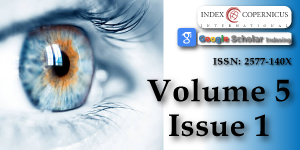Donor profile and trends of eye donation in Central India
Main Article Content
Abstract
Background: The present study was conducted to study the donor profile and to assess the trends of cornea donation.
Methodology: This was conducted as a hospital based cross sectional study at a tertiary care centre in Central India for a period of 5 years. Data was retrieved from 70 patients from eye bank who filled form of eye donation at Eye bank of our institution. Sociodemographic profile of donors, cause of death and time since death was recorded. Source of information regarding corneal donation and reason for not willing to donate the cornea for research purpose was recorded from the filled form. Further cornea enucleated were subjected to serology and their utilization for various purposes were recorded in questionnaire.
Results: The present study retrieved data from a total of 70 donor forms with mean age of 65.84 ± 18.4 years. Cornea obtained from younger patients were mainly utilized for corneal transplantation whereas that from elderly age group > 60 years were mainly utilized for research/training purpose and the observed difference was statistically significant (p < 0.01). The corneas retrieved and utilized immediately after death were significantly used for optical or therapeutic purposes (p < 0.05).
Conclusion: The present highlights the donor profile and trends of corneal donation at the tertiary care facility of Central India. It was observed that though the younger population and older population both are aware regarding corneal donation but still they are less aware on purpose for which cornea can be utilized. Quality of donor cornea is better when death to enucleation time interval was less.
Article Details
Copyright (c) 2021 Jat NS.

This work is licensed under a Creative Commons Attribution 4.0 International License.
World Health Organisation. Visual Impairment and Blindness. WHO Fact Sheet. Geneva, Switzerland: World Health Organisation; 2014. http://www.who.int/mediacentre/factsheets/fs282/en/
Gupta PC, Duggal M, Jamir L, Sharma D, Kankaria A, et al. Knowledge and Attitude Toward Corneal Donation Among High School Children in Northern India. Cornea. 2017; 36: 611-616. PubMed: https://pubmed.ncbi.nlm.nih.gov/28306599/
National Programme for Control of Blindness. 2020. http://pbhealth.gov.in/pdf/Blindness.pdf.
Dandona R, Dandona L. Corneal blindness in a southern Indian population: need for health promotion strategies. Bri J Ophthalmol. 2003; 87: 133–141. PubMed: https://pubmed.ncbi.nlm.nih.gov/12543736/
National Blindness Control Program. Statewise Targets and Achievements for Various Eye Diseasesduring 2015-2016. New Delhi, India: National Blindness Control Progra. 2016.
Sharma B, Shrivastava U, Kumar K, Baghel R, Khan F, et al. Eye Donation Awareness and Conversion Rate in Hospital Cornea Retrieval Programme in a Tertiary Hospital of Central India. J Clin Diagnostic Res. 2017; 11: NC12–NC15. PubMed: https://pubmed.ncbi.nlm.nih.gov/28969171/
Saini JS. Realistic targets and strategies in eye banking. Indian J Ophthalmol. 1997; 45: 141-142.
Ramayamma International Eye Bank: Celebrating 25 years. Hyderabad, India: Department of Communications L V Prasad Eye Institute. 2014.
Ranjan A, Das S, Sahu SK. Donor and tissue profile of a community eye bank in Eastern India. Indian J Ophthalmol. 2014; 62: 935–937. PubMed: https://www.ncbi.nlm.nih.gov/pmc/articles/PMC4244740/
Patel HY, Brookes NH, Moffatt L, Sherwin T, Ormonde S, et al. The New Zealand National Eye Bank study 1991-2003: a review of the source and management of corneal tissue. Cornea. 2005; 24: 576-582.
Sugar J, Montoya M, Dontchev M, Tanner JP, Beck R, et al. Donor risk factors for graft failure in the cornea donor study. Cornea. 2009; 28: 981–985. PubMed: https://www.ncbi.nlm.nih.gov/pmc/articles/PMC3124710/
Ranjan A, Das S, Sahu SK. Donor and tissue profile of a community eye bank in Eastern India. Indian J Ophthalmol. 2014; 62: 935–937. PubMed: https://www.ncbi.nlm.nih.gov/pmc/articles/PMC4244740/
Acharya M, Farooqui JH, Dave A, Chaku D, Ganguly KK. Eye donation in north India: Trends, awareness, influences and barriers. Indian J Ophthalmol. 2019; 67: 1570–1574. PubMed: https://www.ncbi.nlm.nih.gov/pmc/articles/PMC6786220/
Yew YW, Saw SM, Pan JC, Shen HM, Lwin M, Yew MS. Knowledge and beliefs on corneal donation in Singapore adults. Br J Ophthalmol. 2005; 89: 835–840. PubMed: https://pubmed.ncbi.nlm.nih.gov/15965162/
Kokab S, Kokab S. Eye donation Awareness among paramedical staff of different hospitals in Raichur district: a survey. J Evolv Med and Dent Sci. 2013; 2: 3249-3256.
Raj A, Mittal G, Bahadur H. Donor factors influencing corneal tissue utilization in North India. Sudanese J Ophthalmol. 2018; 10: 44.
Armitage WJ, Easty DL. Factors influencing the suitability of organ-cultured corneas for transplantation. Investigat Ophthalmol Visual Sci. 1997; 38: 16-24.

